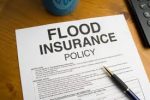Tax Considerations When Deciding to Relocate.

- Floridians pay an average $5,679 per person in state and local taxes
- Residents pay an average $2,584 in state taxes – one of the least amounts nationwide. Only the residents of one other state pay less.
- However, local tax burdens are higher. “Per Capita Local Tax Collections” ranked No. 27 nationally.
- In the balance between state and local taxes, Florida relies more heavily on local revenue than almost all other states and is No. 2 nationwide. Local taxes account for 53.3 percent of the total.
- With property taxes, Florida ranks a solid “average” score – No. 25. The state’s per capita property tax ranking is right at the median – 25th.
- Florida also classifies 38.7 percent of its state and local revenue as non-tax revenue (such as “fees”) – the 7th largest percentage in the nation.
- Florida relies more heavily on transaction taxes, such as general and sales taxes. They make up, 81.5 percent of all state tax collections compared to the national average of 47.2 percent.
- Florida has the highest state and local selective sales (excise) taxes on utilities in the nation. The tax on motor fuels is No. 15; the tax on alcoholic beverages is No. 19.
- Florida’s housing sector produces significant revenue, and the state’s documentary stamp taxes are rising rapidly post-recession. It collected an average of $276 per capita in 2006, $72 in 2009, and $130 per capita in 2016 – the nation’s second-largest doc-tax burden.
- Florida is one of seven states without a personal income tax. The average state relies on personal income taxes for 37.0 percent of its tax revenue.
- Businesses pay 51.7 percent of all Florida state and local taxes – the 12th highest percentage in the nation.













 These are a list of some of the things that need to be done around the house, and spring is a great time to do them. So often we don’t remember to do them, so let this be your wake-up call!
These are a list of some of the things that need to be done around the house, and spring is a great time to do them. So often we don’t remember to do them, so let this be your wake-up call!

 Kim N. Bregman
Kim N. Bregman